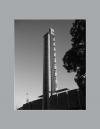Abstract
The independence of the Eastern Band and the complex process of structuration of the República Oriental del Uruguay (Eastern Republic of Uruguay) occurred between the years 1811 to 1830. In this interval there are two crucial moments, 1825, with the Declaration of Independence, and 1830, with the Constitution. Although they have similar symbolic values, the celebration of the centenary of 1830 was more important for our actual subject. However, this double commemoration expanded the festivities of the 'centennial' for a long period of time, and contributes, in fact, to understand it more like an era than a precise moment. At the beginning of the XX century, Uruguay was immersed in a process of economical and demographical growth, political and social changes and urban transformations. In such surround the aspiration was to create an 'ideal country', inspired by the Modern Project, privileging the laws, democratic coexistence, growth of industrialization, technological modernization, development of education and redistribution of wealth, in what is known as the 'batllista state'. In this process, modernity, evolution, culture and integration, where glorified within a society that grew fast as a result of the massive European immigration. In this expansion process, the government developed a policy of permanent public construction. Consequently, the buildings of the civic institutions became urban landmarks for the citizens, and within time, assumed the character of 'primary elements' of the city. This was the way in which the country visualized itself, seeking the transformation of the society without antagonism. The celebration of the Centenary, particularly in 1930, was understood more like a trigger than a final destination. Therefore the examples of the architecture and the urban development made for the celebration of the Centenary, reference us into the construction of a new society and of the spaces of the democracy.Apuntes is registered under a Creative Commons Attribution 4.0 International Public License. Thus, this work may be reproduced, distributed, and publicly shared in digital format, as long as the names of the authors and Pontificia Universidad Javeriana are acknowledged. Others are allowed to quote, adapt, transform, auto-archive, republish, and create based on this material, for any purpose (even commercial ones), provided the authorship is duly acknowledged, a link to the original work is provided, and it is specified if changes have been made. Pontificia Universidad Javeriana does not hold the rights of published works and the authors are solely responsible for the contents of their works; they keep the moral, intellectual, privacy, and publicity rights.
Approving the intervention of the work (review, copy-editing, translation, layout) and the following outreach, are granted through an use license and not through an assignment of rights. This means the journal and Pontificia Universidad Javeriana cannot be held responsible for any ethical malpractice by the authors. As a consequence of the protection granted by the use license, the journal is not required to publish recantations or modify information already published, unless the errata stems from the editorial management process. Publishing contents in this journal does not generate royalties for contributors.


